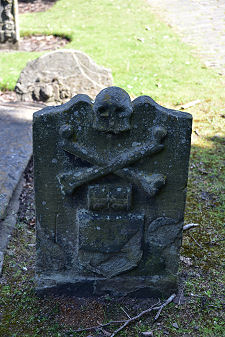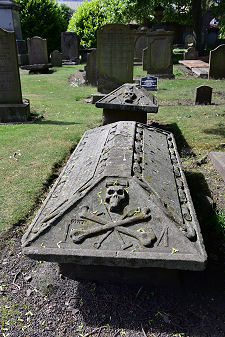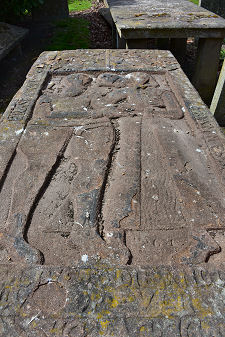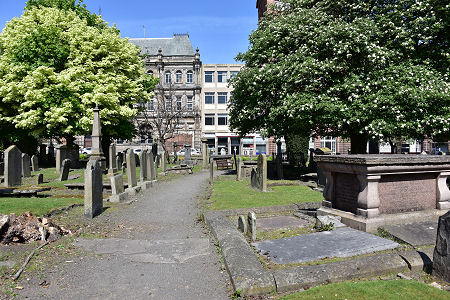 The Howff, Looking North |
The Howff is a burial ground in the heart of Dundee. The area it occupies was originally part of the gardens of the Franciscan Greyfriars Monastery founded here by Devorgilla, mother of King John Balliol. The monastery continued in being until the Reformation of 1560. In 1564, Mary, Queen of Scots granted the land to the burgh of Dundee for use as a burial ground. Today it contains one of the most important collections of gravestones in Scotland and is protected as a category A listed building.
The land was also used as a meeting place by the Dundee Incorporated Trades and it came to be called The Howff. The earliest evidence of burials here, from surviving records of the hire of mortcloths used to cover bodies or coffins before burial, dates back to 1655. Old parish records of burials in The Howff begin in the late 1700s. The last use of the area as a meeting place was in 1776. The last burial in The Howff, of George Duncan, took place in 1878. (Continues below images...)
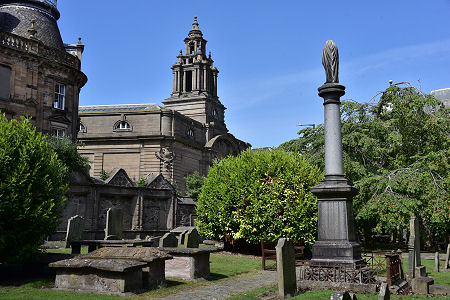 The Howff, Looking North-West |
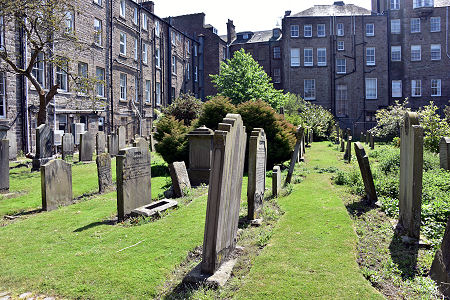 The Howff, Looking South |
It is thought that up to 80,000 people were buried in The Howff. Of these, around 3% are recorded as "foreign", perhaps a reflection of Dundee's maritime heritage. In 1834 a new cemetery, know as the New Howff, was built on what was at the time the northern edge of Dundee. This was largely destroyed by later building work, by the inner ring road of the 1960s, and by a multi-storey car park. Thankfully the orginal Howff has proved more enduring.
Many of the gravestones on view carry the traditional emblems of mortality often found on Scottish gravestones from the 1600s and 1700s. The Christian cross was considered too "papist" by the post-Reformation Scottish Kirk so, until the 1800s, skulls, crossbones, angels, egg timers and other emblems stood in instead, with winged cherubs often marking the graves of infants.
Scottish graveyards are notable for gravestones carrying emblems representing the trades of those interred below. This is particularly notable in The Howff, where many grave markers carry symbols representing one of the Nine Trades of Dundee. These were the weavers, tailors, showmakers, glovers or skinners, bakers, fleshers or butchers, dyers, bonnetmakers and hammermen. The last of these trades covered everything from gold and silversmiths to gunmakers.
Most of the gravestones in The Howff were made from locally quarried sandstone. This is relatively soft and has not stood up to the Dundee climate well; though rather better than the iron grave marker shown on this page which no longer gives any clue to whose grave it marks. Today many of the stone grave markers are also showing signs of erosion.
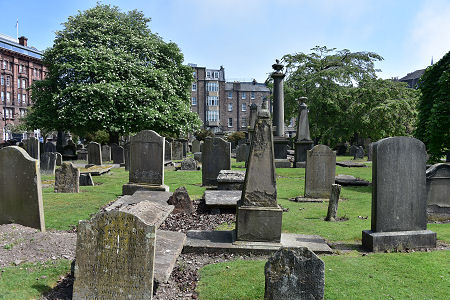 The Howff, Looking East |
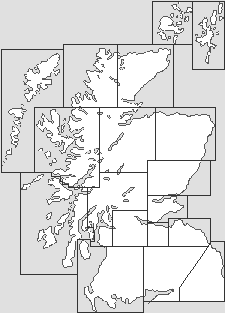
|
|
|
Visitor InformationView Location on MapGrid Ref: NO 401 303 What3Words Location: ///rivers.dull.bronze |
 Old Deeply Carved Stone |
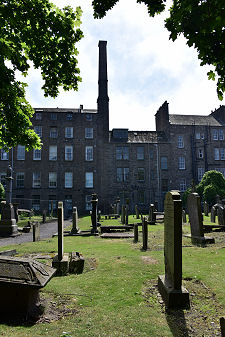 View of a Chimney |
 A Column Memorial |
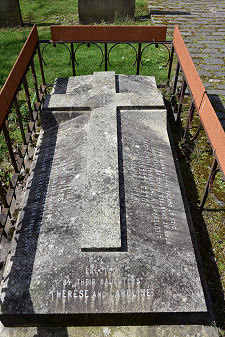 Imperial French Guard and Others |
 The DC Thomson Building |

